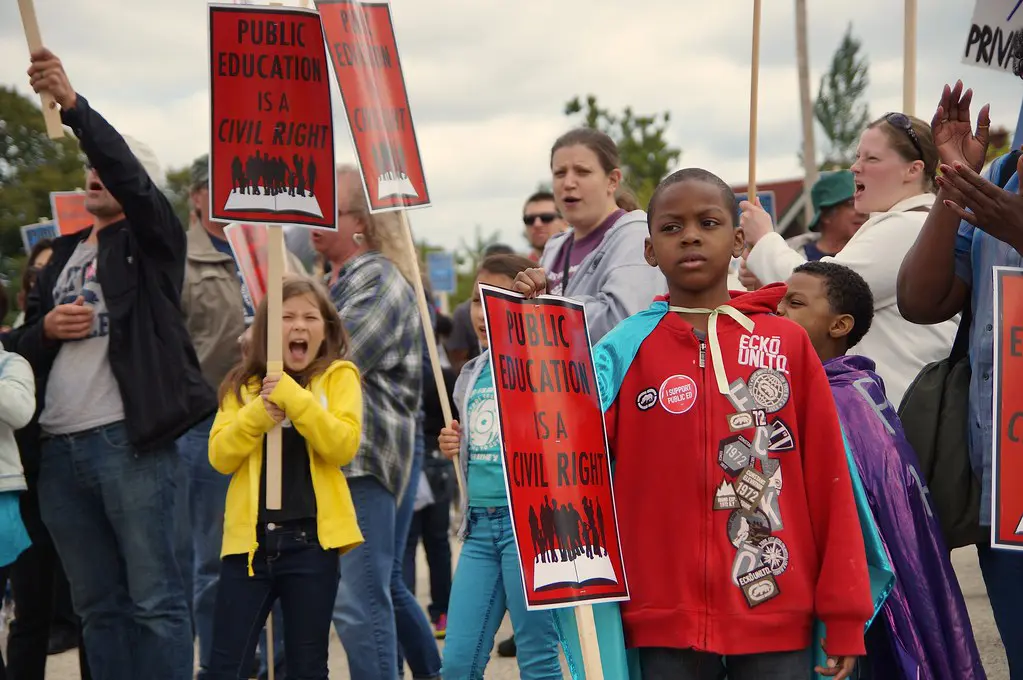The slow death of public schools is hollowing out communities across the Great Lakes Basin and beyond—and it’s no accident.
The school buses will still come this fall. Kids will still walk through the doors with backpacks and nerves, ready for another year of learning. But inside? It’s different now. More kids squeezed into the same classroom. Fewer teachers, fewer aides, less money for basics—let alone the programs that light kids up. And it’s not an accident. It’s by design.
Across the Great Lakes Basin and beyond, politicians are bleeding our public schools dry in the name of “school choice.” They dress it up in slick promises—vouchers, charter schools, tax credits, parental choice—but here’s the truth: this is a slow-motion dismantling of the very system that gives every child, no matter their background, a fighting chance.
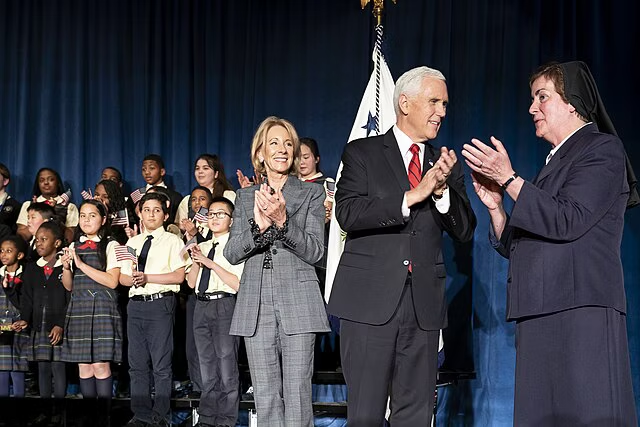
And why is this happening? To remove that fighting chance, of course.
Because the people they’ve spent generations trying to keep down—women, Black and Brown communities, queer kids, the working class—we’re rising. We’re learning. We’re organizing. We’re removing the boot.
And that terrifies them.
Just look at the fabricated “male loneliness epidemic.”
There isn’t one.
What we’re seeing is men finally starting to face the consequences of centuries of unchecked power and oppression.
And they are losing their minds.
Terrified.
Not of being alone—but of being treated the way they’ve always treated the rest of us.
They know what they’ve done. And they fear our rise, not because it’s unjust—but because it is. And they are cowards.
They see the shift. They feel their grip slipping. So now they’re gutting the very system that gave us a foothold.
They’re slamming shut every door we’ve dared to walk through. They are replacing the glass ceiling with steel.
Even some women—and a select few tokenized Black and Brown leaders—are helping keep the boot pressed down, choosing personal power over collective freedom.
They weren’t lifted up to lead us forward. They were placed there to try to keep us in line.
But social media changed that.
Now we see each other.
Now we speak without permission.
And now—we’re organizing without their approval.
And nowhere is that more clear than in places like Keego Harbor, Michigan.
Roosevelt Elementary, a community anchor for over a century as the oldest operating school building in Oakland County, closed after a ceiling collapsed in 2022. Students were dispersed to other schools throughout the district. In March of 2024, the school board voted to demolish the building—not because it was dangerous, but because district leaders feared a charter or private school might one day move in and saw it as competition.
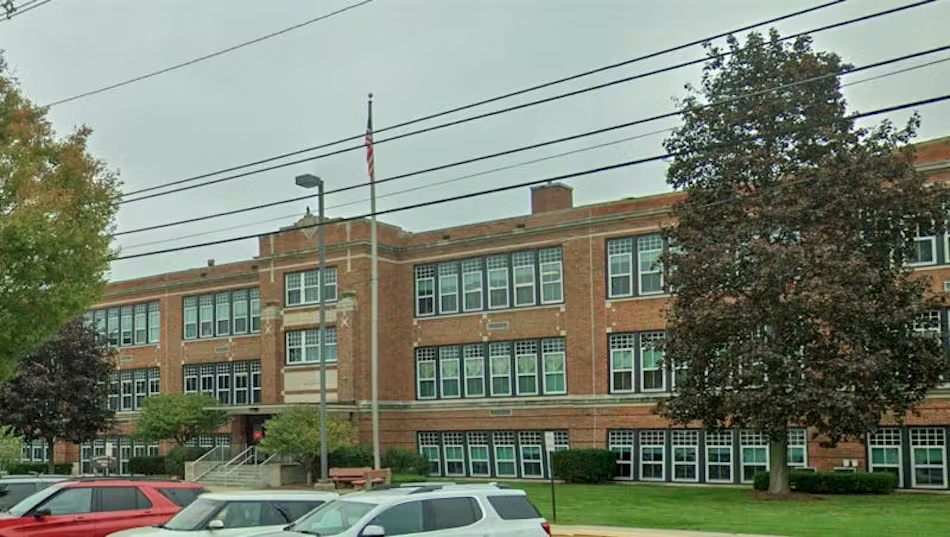
One board member, Carol Finkelstein, testified in Lansing that while there’s no present threat from charter schools, “we simply cannot afford to have it become a competing school.” The school board declined offers to preserve the building and turn it into affordable housing—offers that would wipe out the district’s deficit and preserve history. There is currently ongoing litigation against the school board by a community group that wants to purchase the building and preserve it’s history. The lawsuit was filed in March 2024 by Heart of the Lakes Community, Inc. As of July 2025, the Michigan Court of Appeals has granted leave to appeal.
This isn’t just a structural or fiscal debate. This is a symbolic fight over public control of education. And it’s not theory—it’s happening.
In Michigan, charter enrollment has exploded since the 1990s. According to EdTrust-Midwest, Michigan is #1 in the nation for for-profit management of charter schools, while ranking among the bottom ten in funding low‑income students. In some communities, public schools have closed in clusters because students and dollars were siphoned off into charters.
In Wisconsin, birthplace of the modern voucher movement, the state now spends over $629 million per year—and approaching $1 billion when combined with other non-district spending—on vouchers. We’re talking public dollars going to private and religious schools. This covers only 56,623 students, which exceeds the state’s expenditures on all 126,830 special education students. Meanwhile, aid to public districts is frozen or slashed, and rural schools are closing under mounting financial pressure. In 2024, public school districts lost $139.5 million in state aid, while voucher spending continued to grow.
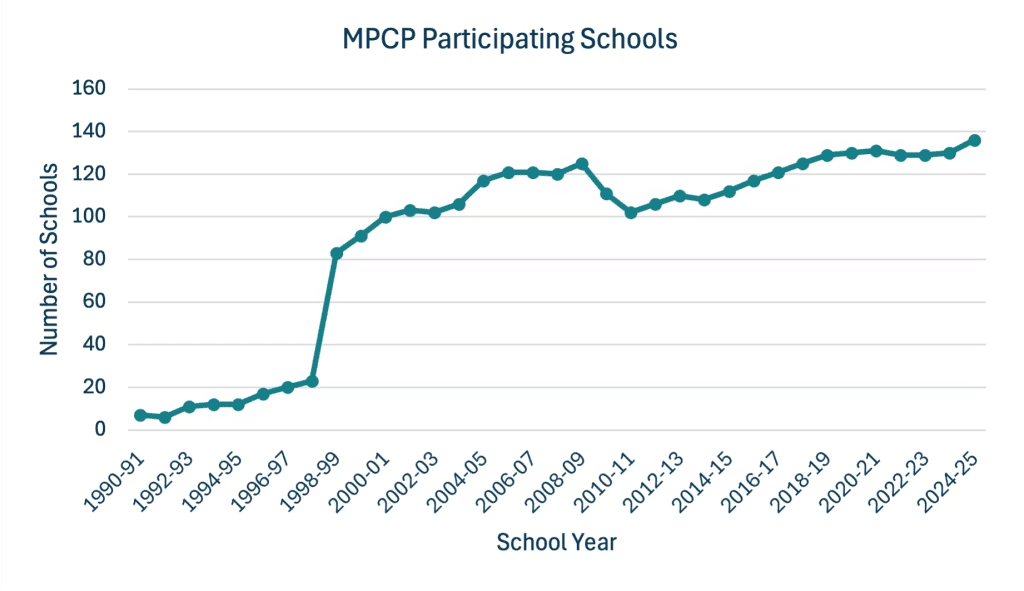
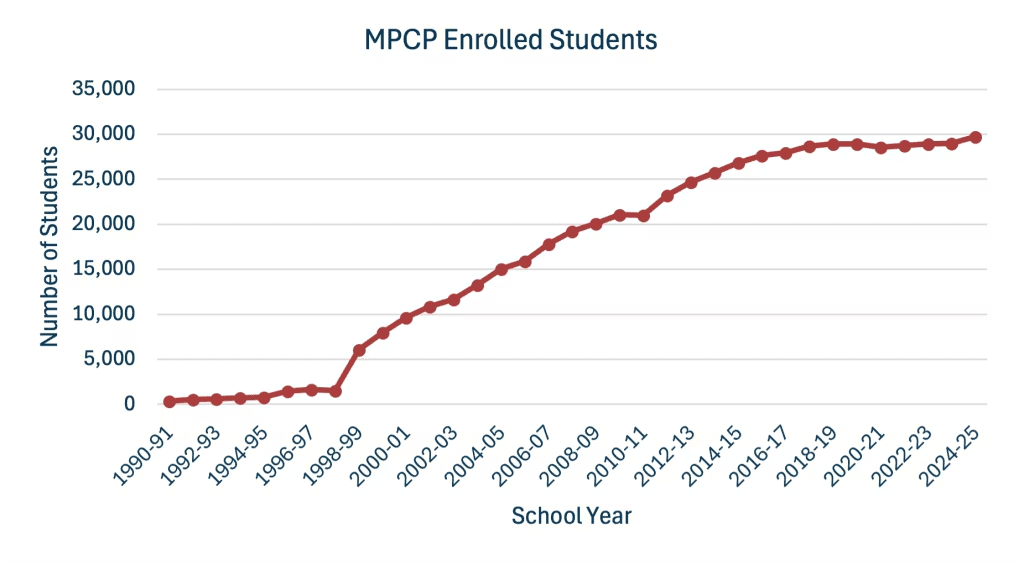
Then there’s Kickapoo Area School District in Viola, Wisconsin. Eleven students received vouchers during the 2023–24 school year, costing taxpayers about $113,811—a 400% year-over-year increase in voucher spending, all for just 11 kids. An increase in voucher spending required a spike in property taxes, which prompted the district to formally request voucher funding be fully itemized on residents’ tax bills, along with calling for lawmakers to stop using public tax dollars to fund private school vouchers all together.
In Ohio, the EdChoice voucher program has ballooned, siphoning hundreds of millions from public schools. We’re talking an estimated $700 million on 140,000 students. The kicker? Most recipients were already enrolled in private schools and over half had never attended public school. In effect, Ohio pays private tuition twice over while its public system sinks. Lawsuits are plentiful.
Indiana is no better. The state continues to expand voucher eligibility to wealthier families, further draining traditional public schools. The 2023-24 school year already saw record voucher use among high-income families due to relaxed thresholds. And starting in June 2026, they will eliminate income limits entirely. Households earning $150-200K saw use rise from about 2,800 to roughly 8,000 students; those earning over $200K jumped nearly tenfold, from 354 to 3,700.
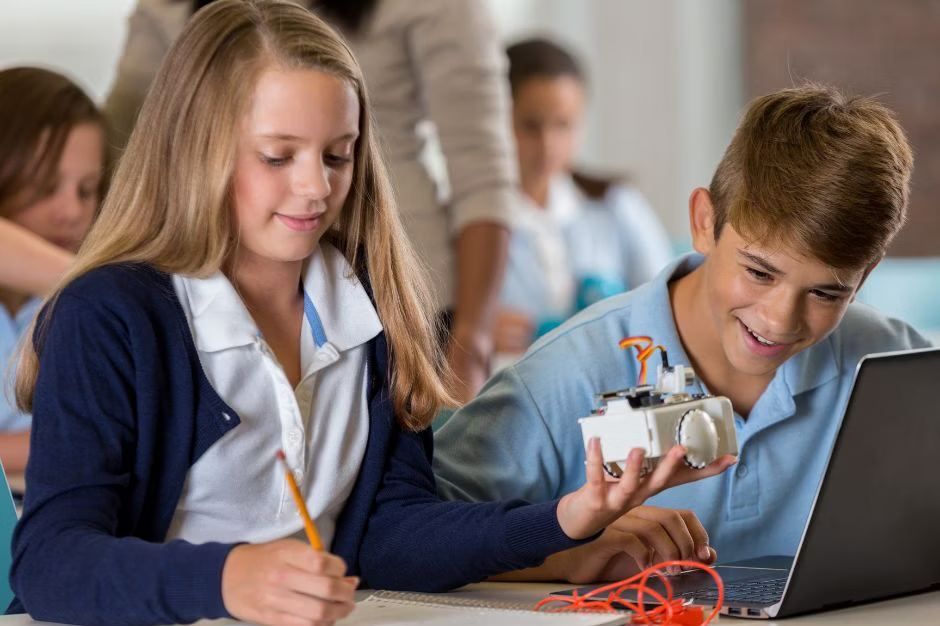
And while New York hasn’t gone full voucher, upstate districts along Lake Ontario suffer under property tax caps and years of disinvestment, forcing school consolidation as the only option. Since 2011, New York State has capped annual school district property tax levy growth at 2% or the Consumer Price Index (CPI), whichever is lower. Nearly half of the districts for 2025-26 are planning to raise property tax levies right up to the cap, with only about 40 districts seeking voter approval. Voters must approve any levy above the cap by a 60% super majority, but many districts lack the flexibility to raise the needed funds.
Even across the border in rural Ontario, chronic underfunding has left schools critically understaffed and communities wrung thin. And even though they don’t use vouchers, the impact looks all too familiar. According to People for Education, Ontario’s school repair backlog soared to about $16.8 billion by 2022 with only about $1.5 billion in annual funding allocated. Too little too late. The combined constraints make consolidation inevitable even when residents resist closure or merger proposals.
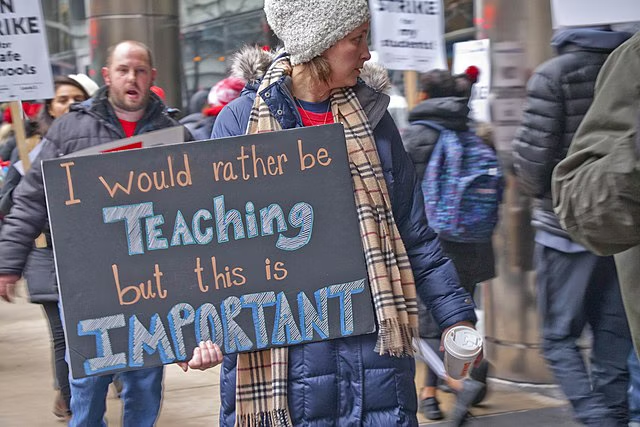
Even without vouchers, communities across the Great Lakes Basin—whether in upstate New York, Michigan, or Ontario—are experiencing education squeezes driven by structural underfunding.
What’s the result of siphoning resources from the bottom to the top? Larger class sizes. Teacher layoffs. School closures in small towns and struggling neighborhoods—the very places public schools once anchored.
Let’s be real: privatization is not about kids.
It’s about power and profit.
Billionaire donors and corporate interests—like the DeVos family—bankroll this agenda because they want control over the system and the public dollars that come with it.
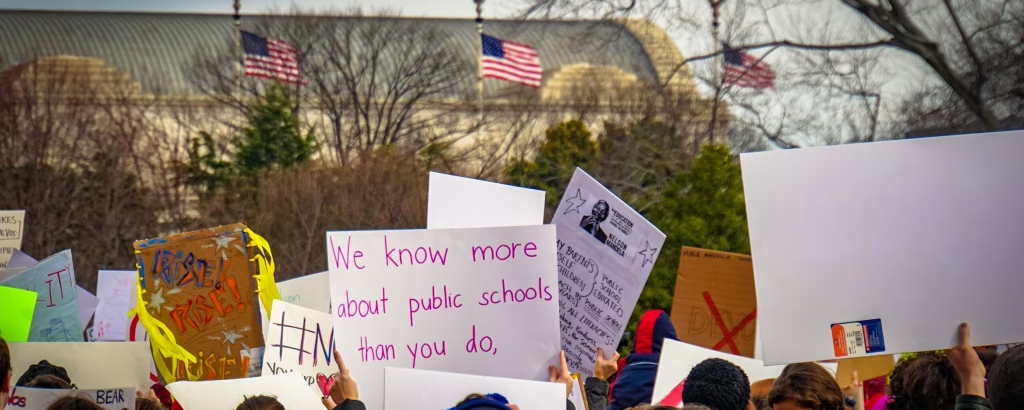
And the hypocrisy?
These same designers of destruction—along with their willfully complicit base—literally raged during COVID about children’s mental health collapsing under lockdown.
But now?
Now they’re pushing policies that gut the very institutions that once held kids together—schools as community hubs, places for last-resort support, daily nutrition for hungry kids, gathering places for everything from football games to fundraisers.
Who loses when public schools close?
Every single one of us.
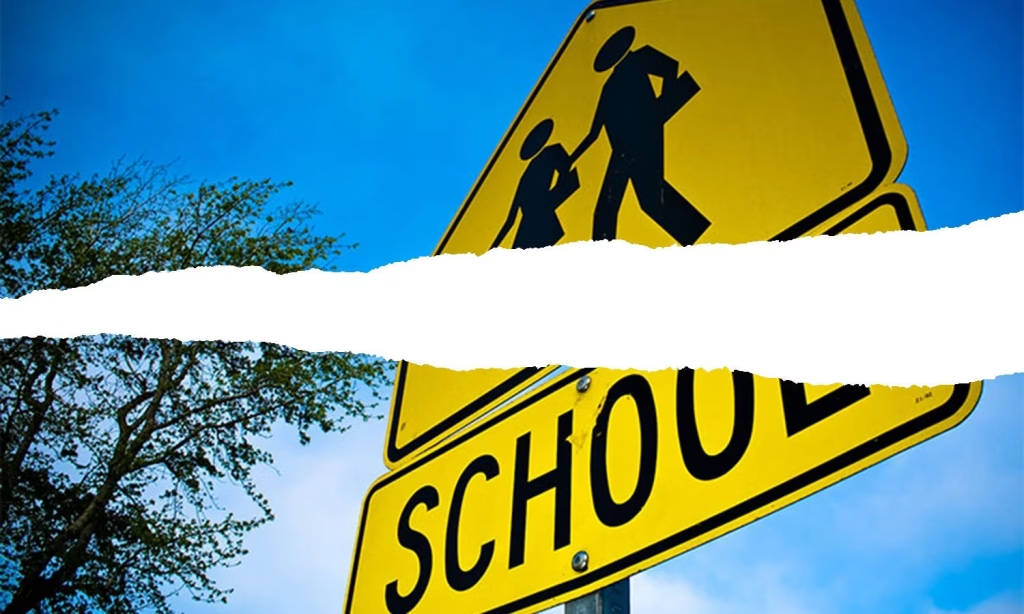
Public schools aren’t just buildings for teaching math and science—they’re the heartbeat of our towns. When a school closes, the entire community feels it.
They spin “choice” as freedom. But what kind of choice is it if most families have none?
And here’s another slap in the face: voucher schools can legally turn away students with disabilities, cultural differences, or religious backgrounds. Rural families often have no alternative—even if they wanted one. And the kids left behind in gutted public schools? They don’t get a choice. They just get less and fall further behind.
But that’s the point, isn’t it?
It’s a crisis and we’re at the edge. Decades of defunding have pushed entire districts toward collapse. Every expansion of voucher laws tightens the noose.
This isn’t just policy—it’s a battle for our communities’ future. It’s a battle for our childrens’ future.
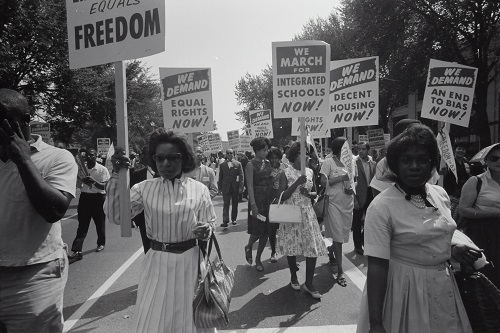
A strong public school system is supposed to be the great equalizer. The promise that every child, no matter their zip code, race, or religion, gets a real shot at opportunity. But let’s be honest: we’ve failed at that promise. Miserably. The so-called American Dream has been all but erased from the national playbook. But was it ever really there? Or was it just another lie—like so many of our human and civil rights, which generations have had to claw their way toward through struggle and resistance?
So what can we do? Because yes, we can do something.
First: watch who votes for these privatization bills. Hold them accountable! We’re launching a public grading system on our website in the near future so you can see exactly where your legislators throughout the Great Lakes Basin Region stand on every issue.
Second: support grassroots organizers. Groups like Save Michigan Public Schools, Wisconsin Public Education Network, and EdTrust Midwest are fighting back with urgency and clarity.
Third: tell your story. If public school closures, cuts, or privatization have hit your town or family, we want to hear it. Your voice carries more power than any statistic. You can email your story here.
Because public education never was—and never should be—a luxury, though the powers that be are doing their damndest to ensure that it is.
Public education is the foundation of democracy. When we allow it to be stripped away, we all lose—whether we see it yet or not.
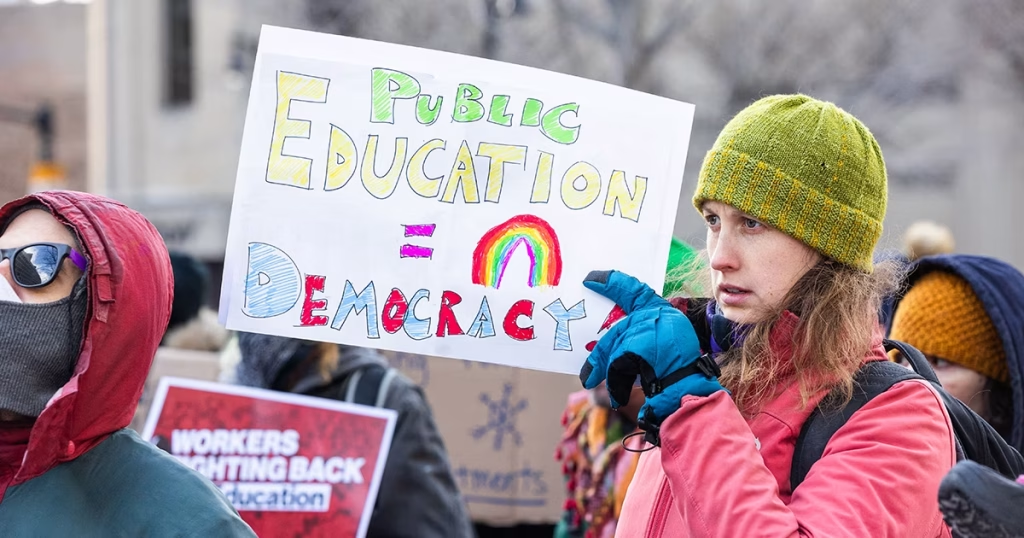
Let me be clear: I fully support quality education for students. The difference between me and school choice advocates? I believe in a high-quality education for all students—not just a select few. It makes us better as a people. I went through this same dilemma with my own son, who is now studying at the University of Michigan. I wanted a better school choice for him than what was offered by our local district and zip code. I wanted his best chance. But not at the expense of every other student who should also have it.
If we invested the same time, energy, and money into every public school—and stopped basing funding on zip code and property taxes—we wouldn’t need alternatives. No vouchers. No school choice advocacy by a ton of non-profits led by a bunch of wealthy people to bring in a whole lot of money in order to buy votes. No system of haves and have-nots.
And yes—we do have the money and the resources—by a whole hell of a lot. What we lack is the political will. Because they don’t want equality. They want control.
Unfettered capitalism needs that divide. It requires the oppressed in order to function and thrive. It cannot survive without people to exploit, to underpay, to discard. So it clings to inequality like oxygen.
This was never about democracy.
it’s always been about power.
But here’s the thing: it only works if we keep playing along.
It’s time we stop participating in our own demise.
It’s time we demand better—for every kid, every school, every community.
This fall, when the buses roll and the kids walk in with fresh backpacks and hope in their eyes, remember: we still have a choice. And it’s time to use it.








